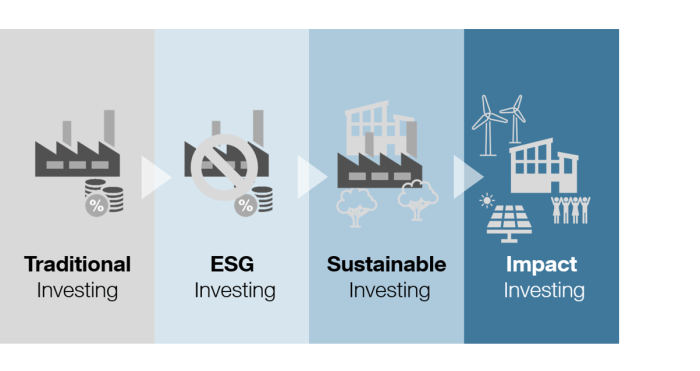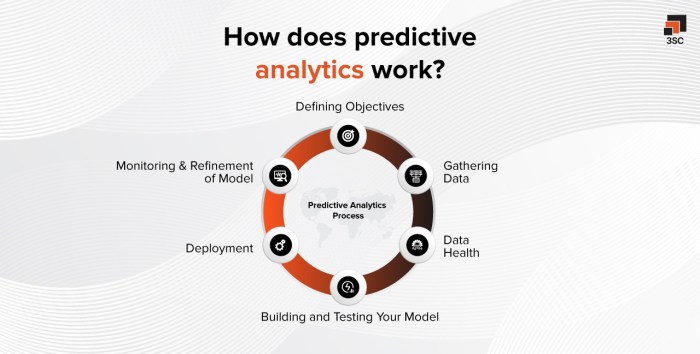How to Choose the Best Accounting Practices for Your Business is a crucial question for any entrepreneur. Navigating the complexities of accounting can feel overwhelming, but understanding the fundamentals and aligning your practices with your business goals is key to success. This guide provides a clear path, exploring various accounting methods, software options, and professional considerations to help you build a robust financial foundation for growth and profitability. We’ll delve into essential principles, practical strategies, and crucial steps to ensure your business’s financial health.
From selecting the right accounting method for your business structure – be it sole proprietorship, partnership, LLC, or corporation – to mastering key principles like revenue recognition and expense tracking, we’ll cover it all. We’ll also examine the vital role of budgeting, financial forecasting, and tax planning in driving your business forward. Understanding the nuances of financial statements and utilizing accounting software effectively will be explored to empower you to make informed decisions and mitigate risks.
Understanding Your Business Needs
Choosing the right accounting practices is crucial for your business’s financial health and long-term success. The approach you take will significantly impact your tax obligations, financial reporting, and overall strategic decision-making. This section focuses on aligning your accounting methods with your specific business needs, ensuring you have the right tools and processes in place from the start.
Accounting Methods for Different Business Structures
The type of accounting method best suited for your business depends heavily on its size and legal structure. Sole proprietorships, partnerships, LLCs, and corporations each have unique accounting requirements and considerations. The following table compares key features of common accounting methods:
| Business Structure | Common Accounting Method | Tax Implications | Complexity |
|---|---|---|---|
| Sole Proprietorship | Cash Basis | Income reported on personal tax return | Relatively Simple |
| Partnership | Cash or Accrual Basis | Income reported on partners’ individual tax returns | Moderate |
| LLC | Cash or Accrual Basis | Depending on election, income passed through to members or taxed at the corporate level | Moderate to High |
| Corporation (S Corp or C Corp) | Accrual Basis (Generally Required for C Corps) | Taxed separately from owners’ personal income | High |
Note: The choice between cash and accrual accounting significantly impacts when revenue and expenses are recognized. Cash basis accounting recognizes transactions when cash changes hands, while accrual accounting recognizes revenue when earned and expenses when incurred, regardless of cash flow. Consult with a tax professional to determine the most appropriate method for your specific circumstances.
Aligning Accounting Practices with Business Goals and Industry Standards
Effective accounting practices are not merely about complying with regulations; they are integral to achieving your business objectives. For example, a startup focusing on rapid growth might prioritize cash flow management and break-even analysis, while a mature company might emphasize long-term profitability and return on investment. Furthermore, adhering to industry-specific standards (like GAAP for publicly traded companies) builds credibility and trust with stakeholders, including investors, lenders, and customers. A clear understanding of your business goals and the relevant industry benchmarks is critical for tailoring your accounting practices effectively.
Choosing Accounting Software
Selecting the right accounting software is paramount. Factors to consider include scalability (the software’s ability to adapt to your growing needs), integration capabilities (seamless connection with other business tools like payroll, CRM, and e-commerce platforms), user-friendliness, and reporting features. Scalability is particularly important; a system that works well for a small business might become inadequate as the business expands. Consider cloud-based solutions that offer flexibility and accessibility, allowing multiple users to access data from different locations. Integration with other business tools streamlines workflows and reduces the risk of data inconsistencies.
Key Accounting Principles and Practices
Choosing the right accounting practices is crucial for the financial health of any business, regardless of size. Understanding the fundamental principles and applying best practices ensures accurate financial reporting, facilitates informed decision-making, and ultimately contributes to long-term success. This section will Artikel key accounting principles and practical applications relevant to small and medium-sized businesses (SMBs).
Generally Accepted Accounting Principles (GAAP) provide a common framework for financial reporting, ensuring consistency and comparability across businesses. While the full complexity of GAAP might seem daunting, SMBs can focus on the core principles relevant to their operations. These principles aim to provide a fair and accurate representation of a company’s financial position. Key aspects include the accrual basis of accounting (recording transactions when they occur, not just when cash changes hands), the matching principle (matching revenues with related expenses), and the going concern assumption (assuming the business will continue operating). Adherence to these principles, even in simplified form, greatly enhances the reliability of your financial statements.
Generally Accepted Accounting Principles (GAAP) and Their Relevance to SMBs
GAAP provides a standardized approach to accounting, ensuring that financial statements are consistent and comparable. For SMBs, understanding and applying core GAAP principles, even in a simplified manner, is crucial for accurate financial reporting and informed decision-making. This includes focusing on the accrual basis of accounting, the matching principle, and the going concern assumption. While the full scope of GAAP may not be necessary for every SMB, adhering to its fundamental principles ensures that financial information is reliable and useful for internal management and, if necessary, external stakeholders. This also simplifies the transition to more complex accounting systems should the business grow.
Best Practices for Revenue Recognition
Accurate revenue recognition is essential for a clear picture of your business’s financial performance. It’s important to record revenue when it is earned, not necessarily when payment is received.
- Use a consistent method for recognizing revenue, such as when goods are delivered or services are rendered.
- Clearly define the terms of sale, including payment schedules and any applicable discounts or returns.
- Maintain detailed records of all sales transactions, including invoices, receipts, and contracts.
Best Practices for Expense Tracking
Effective expense tracking provides crucial insights into your business’s profitability and operational efficiency. This involves categorizing and recording all expenses systematically.
- Categorize expenses by type (e.g., cost of goods sold, operating expenses, salaries) for better analysis.
- Use accounting software or spreadsheets to track expenses and generate reports.
- Maintain supporting documentation for all expenses (e.g., receipts, invoices).
- Regularly review expense reports to identify areas for potential cost savings.
Best Practices for Inventory Management
For businesses that hold inventory, accurate tracking is crucial for managing costs and avoiding stockouts or overstocking.
- Implement an inventory management system to track stock levels and monitor sales trends.
- Regularly conduct physical inventory counts to reconcile with recorded levels.
- Use appropriate inventory costing methods (e.g., FIFO, LIFO) to accurately determine the cost of goods sold.
The Importance of Accurate Financial Record-Keeping and Its Impact on Decision-Making
Accurate and timely financial record-keeping is the cornerstone of sound financial management. It provides a reliable basis for making informed business decisions. Without accurate records, it’s impossible to accurately assess profitability, track cash flow, or make strategic plans for growth.
Accurate financial records are the foundation for sound decision-making in any business.
Maintaining detailed and up-to-date records allows for the timely identification of trends, potential problems, and opportunities for improvement. For example, a business that accurately tracks its expenses might identify areas where costs can be reduced, improving profitability. Similarly, monitoring cash flow allows businesses to anticipate potential shortfalls and take proactive steps to address them. Accurate financial information enables effective budgeting, forecasting, and planning, all of which are essential for long-term business success. A well-maintained system allows for easier tax preparation and compliance, reducing potential penalties and stress.
Choosing an Accounting Professional
Selecting the right accounting professional is crucial for the financial health of your business. The expertise you need will depend on the size and complexity of your operations, as well as your comfort level with accounting tasks. Understanding the roles and responsibilities of different professionals will help you make an informed decision.
Types of Accounting Professionals and Their Roles
Several types of accounting professionals can assist businesses with their financial needs. Each possesses a unique skill set and level of responsibility. Bookkeepers handle the day-to-day recording of financial transactions, such as recording invoices and payments. Accountants provide more comprehensive services, including financial statement preparation, tax planning, and budgeting. Certified Public Accountants (CPAs) are licensed professionals who have passed a rigorous exam and met stringent experience requirements, offering the highest level of expertise and often specializing in auditing and assurance services. The choice between these professionals depends on your business’s specific requirements and budget. A small business might only need a bookkeeper, while a larger, more complex business may require the services of a CPA.
In-House Accountant vs. Outsourcing Accounting Services
The decision of whether to hire an in-house accountant or outsource accounting services involves weighing several factors. Hiring an in-house accountant provides direct access to expertise, greater control over processes, and potentially stronger integration with the business. However, this option incurs higher costs, including salary, benefits, and office space. Outsourcing, on the other hand, offers cost savings by eliminating these overhead expenses. It also provides access to specialized expertise that might be unavailable or too costly to hire internally. However, outsourcing may involve less direct control and potentially slower response times. The best choice depends on the size of your business, your budget, and your specific accounting needs. A large corporation might benefit from an in-house team, while a small startup might find outsourcing a more cost-effective solution.
Checklist of Questions for Potential Accounting Professionals
Before hiring an accounting professional, it’s essential to conduct thorough interviews to assess their qualifications and suitability. A structured approach using a checklist of key questions will help you make a well-informed decision. This ensures you select a professional who understands your business needs and can effectively manage your financial records.
- What is your experience working with businesses similar to mine?
- What accounting software do you use, and are you proficient in integrating with other business systems?
- Can you describe your process for preparing financial statements and tax returns?
- What are your fees and billing practices?
- What is your availability and response time for inquiries?
- What are your procedures for ensuring data security and confidentiality?
- What is your professional liability insurance coverage?
- Can you provide references from previous clients?
- What is your approach to tax planning and compliance?
- How do you stay current with changes in accounting standards and regulations?
Budgeting and Financial Forecasting
Budgeting and financial forecasting are crucial for the long-term health and success of any business. A well-crafted budget provides a roadmap for managing finances, while forecasting allows for proactive adjustments and strategic decision-making. Both processes are intertwined, with the budget informing the forecast and the forecast refining the budget.
Creating a realistic budget involves a thorough understanding of your business’s income and expenses. This requires careful analysis of past performance, current market conditions, and projected future growth. Forecasting, on the other hand, uses the budget as a baseline to predict future financial performance under various scenarios. This allows businesses to anticipate potential challenges and opportunities, enabling them to make informed decisions about investments, expansion, and resource allocation.
Budget Creation
A realistic budget is built upon accurate estimations of revenue and expenses. Revenue projections should consider factors like sales volume, pricing strategies, and market demand. Expense estimations require a detailed breakdown of costs, categorized by type (e.g., direct costs, indirect costs, operating expenses). Regular monitoring and adjustments are crucial to ensure the budget remains relevant throughout the fiscal year.
| Category | January | February | March | Total (Q1) |
|---|---|---|---|---|
| Sales Revenue | $10,000 | $12,000 | $15,000 | $37,000 |
| Cost of Goods Sold | $4,000 | $4,800 | $6,000 | $14,800 |
| Gross Profit | $6,000 | $7,200 | $9,000 | $22,200 |
| Operating Expenses | $3,000 | $3,000 | $3,500 | $9,500 |
| Net Income | $3,000 | $4,200 | $5,500 | $12,700 |
This sample budget shows a projected net income of $12,700 for the first quarter. Note that this is a simplified example; a real-world budget would be significantly more detailed.
Financial Statement Analysis and Reporting
Regular analysis of financial statements—income statements, balance sheets, and cash flow statements—is essential for monitoring the financial health of a business. This involves comparing actual results to the budget, identifying variances, and investigating the underlying causes. Regular reporting, whether monthly, quarterly, or annually, keeps stakeholders informed of the business’s performance and facilitates timely corrective actions.
Key Financial Ratios and Metrics
Financial ratios provide insights into various aspects of a business’s financial performance. Profitability ratios, such as gross profit margin and net profit margin, measure the efficiency of generating profits. Liquidity ratios, like the current ratio and quick ratio, assess the ability to meet short-term obligations. Solvency ratios, such as the debt-to-equity ratio, indicate the long-term financial stability of the business.
For example, a high debt-to-equity ratio suggests a higher level of financial risk. A low current ratio might indicate potential liquidity problems.
Analyzing these ratios over time and comparing them to industry benchmarks allows businesses to identify areas for improvement and make data-driven decisions. For instance, a consistently low net profit margin might signal the need for cost-cutting measures or a review of pricing strategies. A declining current ratio could necessitate adjustments to working capital management.
Tax Planning and Compliance

Effective tax planning is crucial for business success. Minimizing your tax liability through legal means allows you to retain more profit for reinvestment, expansion, or distribution to owners. Understanding your tax obligations and utilizing available deductions and credits can significantly impact your bottom line.
Tax planning involves proactively managing your financial affairs to reduce your tax burden within the bounds of the law. It’s not about avoiding taxes altogether, but about strategically structuring your business and financial decisions to minimize your tax liability. This requires careful consideration of various factors, including your business structure, revenue streams, and expenses.
Common Tax Obligations for Businesses
Businesses face a variety of tax obligations depending on their structure (sole proprietorship, partnership, LLC, corporation), location, and industry. These commonly include federal income tax, state income tax (where applicable), sales tax, payroll tax (including Social Security and Medicare taxes), and potentially property tax. Understanding these obligations and their respective deadlines is paramount to avoid penalties. Failure to file or pay taxes on time can result in significant financial repercussions, including interest and penalties.
Strategies for Minimizing Tax Liabilities Legally
Several strategies can legally minimize tax liabilities. These include optimizing deductions, utilizing tax credits, and strategically timing income and expenses. For example, maximizing deductions for business expenses, such as office supplies, rent, and employee salaries, directly reduces taxable income. Careful planning of large purchases or investments can also strategically affect the timing of tax liabilities. Consulting with a tax professional is highly recommended to develop a tailored strategy based on your specific circumstances.
Examples of Tax Deductions and Credits Available to Businesses
Numerous deductions and credits are available to businesses, depending on their specific activities and circumstances. Examples include deductions for depreciation of assets (like equipment), research and development expenses, charitable contributions, and home office expenses (if applicable). Tax credits, on the other hand, directly reduce the amount of tax owed, often providing a greater benefit than deductions. The Research and Development Tax Credit, for instance, offers a significant incentive for businesses investing in innovation. The Small Business Health Care Tax Credit can help small businesses offset the cost of providing health insurance to their employees. Eligibility criteria vary for each credit and deduction, so it’s vital to thoroughly research and understand the requirements.
Step-by-Step Guide for Preparing and Filing Business Tax Returns
Preparing and filing business tax returns can be complex, requiring meticulous record-keeping and attention to detail. A step-by-step approach can streamline the process.
- Gather Necessary Documents: This includes all financial records, such as bank statements, invoices, receipts, and payroll records. Accurate and organized record-keeping is essential for accurate tax preparation.
- Choose the Right Tax Form: The appropriate tax form depends on your business structure. Sole proprietorships typically use Schedule C, partnerships use Form 1065, and corporations use Form 1120.
- Calculate Your Income and Expenses: Accurately determine your gross income and deduct all eligible business expenses to arrive at your net income or loss.
- Claim Applicable Deductions and Credits: Identify and claim all relevant deductions and credits to minimize your tax liability. This often requires careful review of tax laws and regulations.
- File Your Return: File your tax return by the designated deadline to avoid penalties. You can file electronically or by mail, depending on your preference and the requirements of your tax jurisdiction.
- Pay Any Taxes Owed: Pay any taxes owed by the due date to avoid interest and penalties. Consider setting aside funds throughout the year to ensure you have sufficient funds available at tax time.
Internal Controls and Fraud Prevention
Implementing robust internal controls is paramount for any business, regardless of size. These controls act as a safeguard against financial losses, operational inefficiencies, and reputational damage stemming from fraud and errors. A strong internal control system fosters trust among stakeholders, improves operational efficiency, and enhances the reliability of financial reporting.
Internal controls encompass a range of policies, procedures, and practices designed to mitigate risks and ensure the accuracy and reliability of financial information. They cover various aspects of a business, including authorization, recording, safeguarding of assets, and segregation of duties. Effective internal controls are proactive, rather than reactive, aiming to prevent problems before they occur.
Safeguarding Assets and Data Security Best Practices, How to Choose the Best Accounting Practices for Your Business
Protecting a business’s assets and sensitive data is crucial. This involves both physical security measures and robust digital security protocols. Physical assets like cash, inventory, and equipment require secure storage and access control. Data security necessitates the implementation of strong passwords, regular software updates, firewalls, and data encryption. Regular security audits and employee training on cybersecurity best practices are also essential. For instance, a small retail business might utilize a secure cash register system with limited access, regularly reconcile cash balances, and employ surveillance cameras to monitor the premises. Similarly, a digital marketing agency should utilize strong passwords, multi-factor authentication, and cloud-based storage with encryption to protect client data.
Visual Representation of a Strong Internal Control System for a Small Business
Imagine a small bakery. The owner, responsible for overall oversight, delegates specific tasks. The baker manages inventory and baking, maintaining detailed records of ingredients used and products baked. A separate employee handles sales and cash transactions, using a point-of-sale system that automatically records all sales and payments. A third employee manages accounts payable and receivable, ensuring timely payments to suppliers and collections from customers. Each employee has limited access to other areas of the business. The owner regularly reviews financial statements, compares them to inventory records and sales data, and reconciles bank statements. This separation of duties, combined with regular monitoring and reconciliation, forms a strong internal control system. Any discrepancies are immediately investigated. This system minimizes the risk of errors and fraud by preventing any single person from controlling the entire financial process. The use of technology like the point-of-sale system further enhances accuracy and reduces manual errors.
Software and Technology Solutions: How To Choose The Best Accounting Practices For Your Business
Selecting the right accounting software is crucial for efficient financial management. The right tools can streamline processes, improve accuracy, and provide valuable insights into your business’s financial health. Choosing the wrong software, however, can lead to frustration, inaccuracies, and wasted time. This section will guide you through the process of selecting and implementing the best accounting software for your specific needs.
Accounting software comes in various forms, each with its own strengths and weaknesses. The best choice depends heavily on factors such as business size, complexity, industry, and budget. Cloud-based solutions offer significant advantages in terms of accessibility and collaboration, while on-premise solutions might offer more control over data security for businesses with stringent regulatory requirements.
Comparison of Accounting Software Options
Several accounting software options cater to diverse business needs. The following comparison highlights key features, pricing models, and suitability for different business sizes and complexities:
- Xero: Known for its user-friendly interface and robust features, Xero is a popular cloud-based solution ideal for small to medium-sized businesses. It offers features like invoicing, expense tracking, bank reconciliation, and reporting. Pricing typically varies based on the number of users and features required. Xero’s scalability makes it suitable for growing businesses.
- QuickBooks Online: Another leading cloud-based option, QuickBooks Online offers a wide range of plans catering to different business sizes and industries. It integrates well with other business applications and offers features like inventory management, payroll processing, and time tracking. Pricing varies based on the chosen plan and features.
- Sage 50cloud: This software is a good option for businesses that require more advanced features and customization options than those offered by simpler solutions. It offers robust inventory management, job costing, and project accounting features, making it suitable for larger businesses or those with complex accounting needs. Pricing is generally higher than cloud-based options due to the software’s comprehensive features.
- Zoho Books: A more affordable option, Zoho Books provides a comprehensive suite of accounting features suitable for small businesses and startups. It offers features like invoicing, expense tracking, and inventory management, with competitive pricing plans. It’s a good option for businesses looking for a cost-effective solution without compromising functionality.
Benefits of Cloud-Based Accounting Software
Cloud-based accounting software offers several advantages over traditional on-premise solutions. These benefits significantly impact efficiency and accessibility.
- Accessibility: Access your financial data from anywhere with an internet connection, using any device.
- Real-time Collaboration: Multiple users can access and update data simultaneously, improving team collaboration.
- Automatic Updates: Software updates are handled automatically, eliminating the need for manual upgrades and ensuring you always have the latest features and security patches.
- Reduced IT Costs: No need for expensive server hardware and IT maintenance.
- Enhanced Security: Reputable cloud providers invest heavily in data security, often exceeding the capabilities of smaller businesses.
Integrating Accounting Software with Other Business Systems
Integrating your accounting software with other business systems can significantly streamline workflows and improve data accuracy. This integration allows for automatic data transfer, reducing manual data entry and the risk of errors.
The integration process typically involves using APIs (Application Programming Interfaces) or third-party integration tools. For example, integrating your accounting software with a CRM (Customer Relationship Management) system can automatically record customer payments and update sales data. Similarly, integrating with an inventory management system can automatically update inventory levels and cost of goods sold.
You also can investigate more thoroughly about How to Perform a Business Valuation to enhance your awareness in the field of How to Perform a Business Valuation.
Successful integration requires careful planning and consideration of data compatibility. It’s crucial to choose software solutions that offer robust integration capabilities and to work with a qualified IT professional if necessary to ensure a seamless integration process. The benefits of this integration include improved data accuracy, reduced manual data entry, and better visibility into the overall business performance.
End of Discussion
Ultimately, choosing the best accounting practices for your business is an ongoing process that requires careful consideration, adaptation, and a proactive approach. By understanding your specific needs, implementing sound accounting principles, and leveraging the right tools and professionals, you can build a strong financial foundation that supports sustainable growth and long-term success. Regular review and refinement of your practices will ensure your business remains financially healthy and prepared for future challenges and opportunities.
Frequently Asked Questions
What is the difference between a bookkeeper and an accountant?
Bookkeepers primarily record financial transactions, while accountants analyze that data, prepare financial statements, and offer strategic financial advice.
How often should I reconcile my bank statements?
Ideally, reconcile your bank statements monthly to catch errors and discrepancies promptly.
What are some red flags indicating I need to improve my accounting practices?
Red flags include inconsistent cash flow, difficulty tracking expenses, inaccurate financial reports, and a lack of understanding of your financial position.
Should I use cash-basis or accrual-basis accounting?
The choice depends on your business size and complexity. Cash-basis is simpler for smaller businesses, while accrual-basis is generally required for larger businesses and tax purposes.









